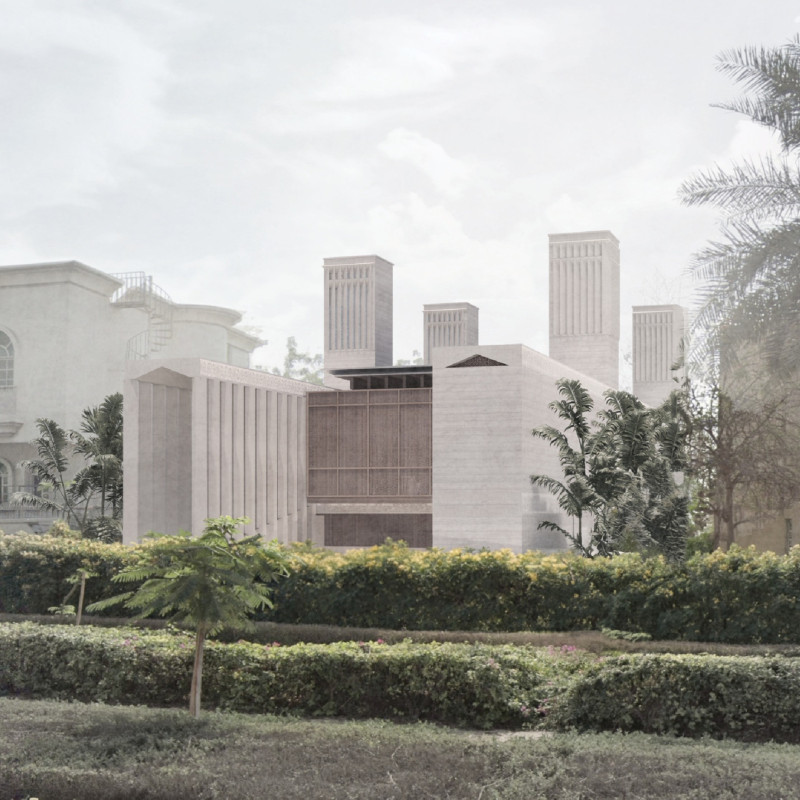5 key facts about this project
From the outset, the project embodies a clear architectural narrative, showcasing a design that respects its surroundings while also standing out as an exemplar of innovative thought. The structure’s facade features a harmonious blend of materials, including reinforced concrete, glass, and sustainable cladding systems. This choice of materials is not only aesthetically pleasing but also functional, addressing environmental concerns through energy efficiency and reduced maintenance demands. The extensive use of glass serves to foster a relationship between the interior and exterior, allowing natural light to permeate the spaces, which enhances the experience for its inhabitants.
Internally, the layout is characterized by an open-plan design that encourages flexibility and adaptability. This layout supports a variety of activities, emphasizing collaboration and interaction among users. Strategic placement of windows and openings creates visual links between different areas while providing occupants with delightful views of the surrounding landscape. This not only enhances the users’ experience but also reinforces the bond with nature, which is increasingly integral in contemporary architectural discourse.
The project also showcases unique design approaches, particularly in its commitment to sustainability. Features such as green roofs, rainwater harvesting systems, and solar panels speak to a forward-thinking ethos, prioritizing ecological stewardship. Furthermore, the incorporation of biophilic design principles—such as the use of natural materials and indoor gardens—enhances the occupants' well-being, creating a refreshing atmosphere that encourages a healthy lifestyle.
In terms of circulation, the building's layout is intuitively designed, ensuring that movement through the space feels natural and unforced. The integration of public pathways with private spaces encourages seamless transitions, allowing for a fluid interaction between different areas of the project. The emphasis on design clarity enhances wayfinding, ensuring that both residents and visitors can navigate the environment confidently.
Landscaping also plays a crucial role in this architectural endeavor. Thoughtfully designed outdoor spaces provide areas for relaxation and recreation, reinforcing the connection to nature and encouraging social interaction among users. The exterior spaces are carefully curated with plantings that are native to the region, enhancing biodiversity and promoting an ecological habitat while ensuring low maintenance requirements.
The project exemplifies a dedication to community involvement, as it incorporates feedback from local stakeholders to inform its design elements. This process not only enhances the building's relevance but also fosters a sense of ownership and pride among residents, positioning the project as a vital asset within the community.
This architectural design stands out due to its commitment to sustainability, thoughtful material selection, and strong community focus. Each detail is meticulously planned to align with broader architectural ideas that encourage not just the functionality of spaces but promote an enriched quality of life. For those interested in delving deeper into the intricacies of this architectural project, a review of the architectural plans, sections, and detailed designs will provide invaluable insights into the thought processes and innovative solutions behind this endeavor. Exploring these elements will allow for a greater appreciation of the architecture and its outreach to the community, ultimately highlighting the project’s significance in addressing contemporary urban challenges.


























